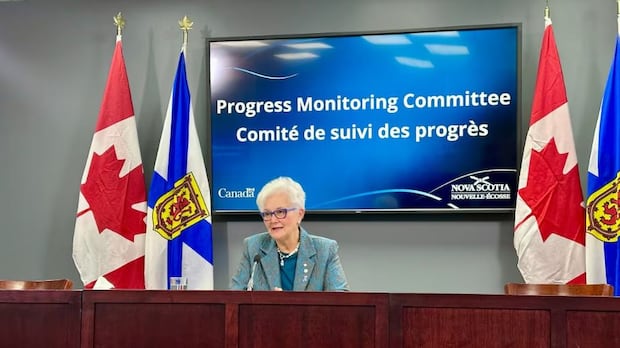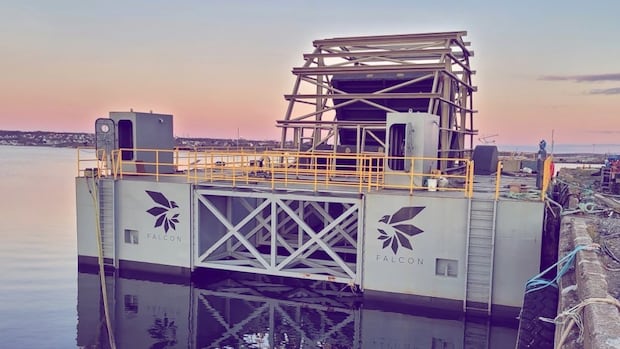Fire chief frustrated by long ambulance wait times

A fire chief in Cumberland County says he’s frustrated by long wait times for ambulances in his area, which have left his volunteers responding to more medical calls than fires.
Charles Lewis, the chief of the FPW Fire Brigade, says 90 per cent of the calls they receive are to medical events.
“I’m getting to the point myself, and I can’t speak for other members, but when is enough enough?” Lewis told CBC Radio’s Maritime Noon on Wednesday.
“There’s going to come a time when we’re going to have to look at a mother, father, sister, daughter and say, ‘we don’t know if your family member’s going to make it because we don’t know when the ambulance is going to get here.'”
Featured VideoFPW Fire Brigade chief Charles Lewis says firefighters are responding to more medical emergencies because ambulances are scarce and that the situation is getting desperate.
According to a report by auditor general Kim Adair last month, the average wait time for an ambulance in 2022 rose to 25 minutes from 14 minutes.
Lewis said one recent call in the area pushed him to speak out.
He said a woman had called for an ambulance because her partner, a cancer patient who had just received chemotherapy, had a high temperature and was having trouble breathing.
Lewis said the volunteer firefighters, who have some medical training, responded and did everything they could by checking the patient’s vitals and keeping them calm and comfortable during the wait. Firefighters can’t leave the scene until they are relieved by paramedics.
He said after 50 minutes of waiting, the wife was told that it would be another hour and 45 minutes before an ambulance would arrive from Halifax — despite there being Emergency Health Services stations in closer communities such as Parrsboro, Amherst and Truro.
“It really wasn’t good. The wife was very, very emotional. She was very angry,” Lewis said. “She had a lot of questions. Why? Where are they at? And we don’t have the answers to tell them, I mean, it’s just the wait times are just, it’s way too much.”
Lewis said he and the wife ended up driving the patient to the hospital in Truro, about an-hour-and-a-half drive away, instead of waiting for the ambulance.
More to be done
Jeff Fraser, the executive director of the EHS branch for the province’s department of health and wellness, said he understands Lewis’s concerns about ambulance wait times in Cumberland County.
He said the entire system is under a great amount of duress, which can in part be attributed to a four per cent increase in demand. He said about 70 per cent of EHS patients are also considered low acuity, and don’t require urgent care.
“The focus is to make sure we put the right practitioner at the right patient at the right time,” Fraser said.
He said to do this, the province has been working to make improvements across the health-care system.
Fraser said the province has been focusing on recruitment and retention of paramedics to increase capacity.
Paramedics in Nova Scotia recently rejected a contract offer of a wage increase of 20 per cent, saying it did not do enough to address concerns about work-life balance.
Maritime Noon53:07A fire chief in Cumberland County, NS, tells us about a long wait for an ambulance on a medical call recently. And we hear a response from the Department of Health. And on the phone-in: Aaron Publicover answers your questions about appliances.
Featured VideoCharles Lewis is the fire chief at the FPW Fire Brigade in Fox River, Port Greville and Wards Brook, NS. He tells us about a recent medical call where the ambulance took so long, the family gave up and went to the ER in Truro. We hear a response from Jeff Fraser with the EHS Branch for the NS Department of Health and Wellness. And on the phone-in: Aaron Publicover on appliance repair.
To further address demand, the province has also started using transfer vehicles to respond to emergencies early last year and purchased a new LifeFlight airplane that will transport non-critical patients from Yarmouth and Sydney to Halifax for routine services.
“As we unroll some more of these programs and we move through the different phases and we’re able to take in more patients, we should start to see some of the net benefits of improving our response times across the system,” he said.
Still, Fraser said there’s always more that can be done.
“It’s a complicated thing. I wish I had a silver bullet for Chief Lewis and all of the Nova Scotians,” he said.
“But all I can tell you is that the status quo for us is not an option and we continue to invest and to drive the changes we need so we can really meet the needs of Nova Scotians.”




